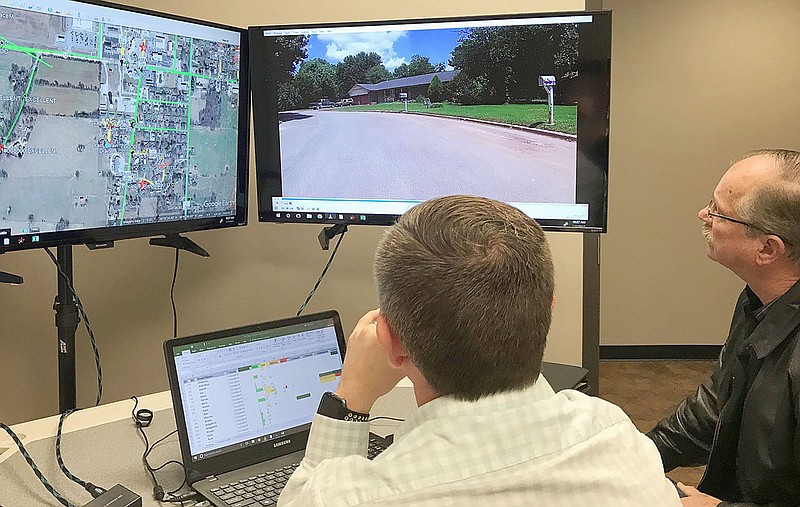Driving every street in town and recording the road conditions was essential to provide the framework to prioritize street maintenance and repair. Now, with the help of computer software from Green Barrow and a partnership with the University of Arkansas, city Street Department workers can keep a close eye on street conditions from a desk and know exactly where to focus first.
Street Department superintendent Nathan See recently showed city officials the new software, purchased last year.
"Used to be, we did all of this on paper," See said. "Every year, they come through in June and drive every street like Google Earth and rate every street per pavement rating program."
"The cool thing about this hardware, when we do a street, I can add a temporary placement and show when it was overlaid," See said. "Hopefully, every year we have improvements and see the fractures, potholes going away."
Roads are rated from good to fair to critical to lost to reconstruction. There are about 15 potholes in town, See said, explaining that drainage is the main issue with road conditions.
"The majority of potholes are due to water -- water, dirt, traffic are the three things that will kill a road faster than anything," See said.
"Another thing good about this," See said, is that it is an objective view of street conditions and gives an answer to city residents who complain that favoritism was shown in which streets are repaired.
"This takes the heat off you and other city officials," alderman Bob Cottingham said. "It's tangible."
Working actively instead of re-actively is his goal, See said, trying to prevent worsening of the roads and holding developers to a standard to prevent drainage problems.
"I'm saving more than this costs," See said. "We used to spend a week just driving around -- there are 110 miles of roads," See said.
Only asphalt roads are counted. "Pavement life is 25 years per statistics. The first five year are good then they start deteriorating.
See said the Benton County Road Department uses the software program and recommended it to all cities in the county. He said Rogers has the program, too. The cost to the city is $6,500 per year. The initial cost of the software, monitors and all hardware was $2,500.
Usually roads rated "fair" will get first priority to prevent them from getting critical. See said "critical" ones are few, do not have high traffic counts and have some gravel spots. He said a road that is critical will cost 15 percent more to bring to standard than a fair one.
Inside the city limits of Pea Ridge, there are two state highways and See said this program allows him to share the information with the State Highway Department.
General News on 01/17/2018
